
Many of my patients have told me that as they get older, trying to keep a fast metabolism feels like a full-time job. Now is not the time to throw in the towel though! A recent study in the New England Journal of Medicine showed it’s never too late to start a healthy eating habit. Even if you clean up your diet in middle age or older years, you may still reap the benefit of living longer.
Try these six easy tips to help you kick start your metabolism, implement healthier eating habits and lose some extra unwanted weight.
Lack of movement throughout your day can be doing serious harm. Not only may weight creep up but the risk for disease might as well. Studies have found wearable activity tracking technology and applications may help empower you in setting, monitoring and overall committing to your personal health goals.
Devices from FitBit, Garmin, Jawbone and more can help you track activity, calories, hydration and even your quality of sleep (another factor in effective weight loss). A wearable accountability tool may be the push you need.
- Double up on protein.
After 60, two major lifestyle changes occur: Your muscle mass decreases even further and your protein needs increase. Both of these impact muscle mass and ultimately weight. To combat this, you’ll need to make sure you’re exercising beyond aerobic activities (to build muscle mass, which helps in weight loss and longevity) and you’re doubling the grams of protein you’re consuming.
A 2014 study suggested older adults double their dietary protein needs to help maintain muscle and address other overall health-related issues. One way to accomplish this is to make sure protein is added to every meal. Add protein including chicken, tofu or fish to salads. Start your day with a protein drink, snack on nuts or choose beans over grains at dinner time.Joy Bauer's Protein Pancakes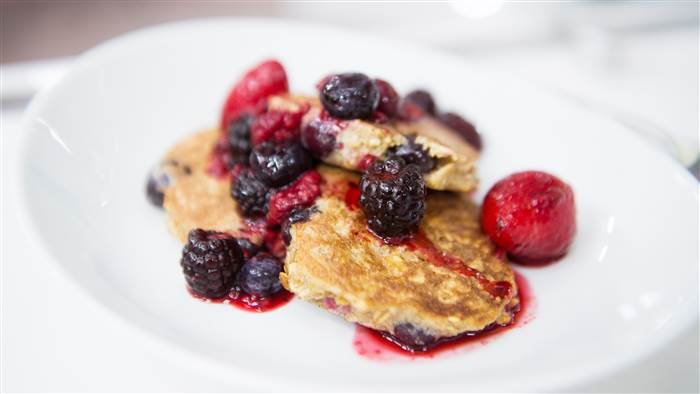
Carry a water bottle.
Dehydration can often be masked as hunger, and the risk of dehydration increases after age 65. Therefore, it’s important to stay fully hydrated with both caffeine and sugar-free liquids as well as water-rich fruits and vegetables including watermelon, cauliflower, celery, broccoli and spinach.Focus on your waist, not your weight.
You may never fit back into the jeans you graduated high school in. That’s OK. What’s more important (and science confirms this) is to focus on your waist size instead. Multiple studies have shown central obesity (fat around your middle) is associated with an increased risk of cancer and early death.Find a buddy.
A 2013 study showed exercising with someone else can actually have a contagious effect on motivation.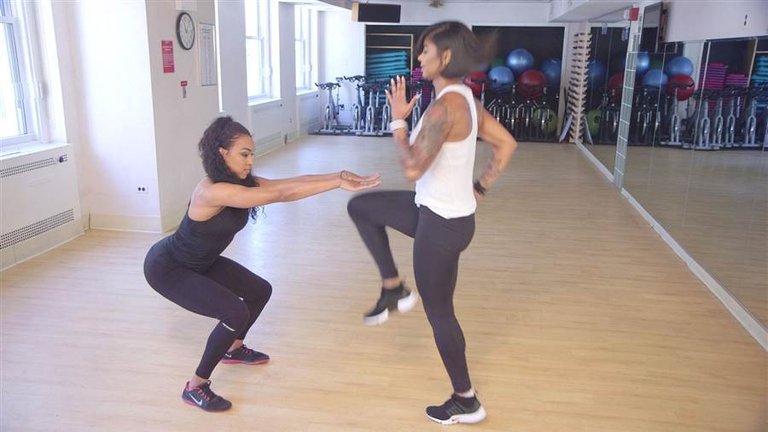
You love probiotics, now embrace prebiotics.
You’ve probably figured out already that white bread and pasta won’t do you any favors in the weight category. Now is the time to take that information to the next level. You can do this by focusing on a prebiotic called resistant starch. Resistant starches literally resist digestion in the small intestine and go directly to the large intestine where they are fermented. Why should this matter? Because studies show this process helps with increasing satiety or fullness through the production of short chain fatty acids, better blood sugar control and more fat-burning capability.
You can find resistant starches in beans, corn, bananas, brown rice, oats and lentils. Interestingly enough, resistant starch content increases after a food is cooled. So if you indulge every once in a while in white bread and potatoes for example, and you choose to cool your food after cooking, the resistant starch increases.
Spice-Roasted Carrots with Lentils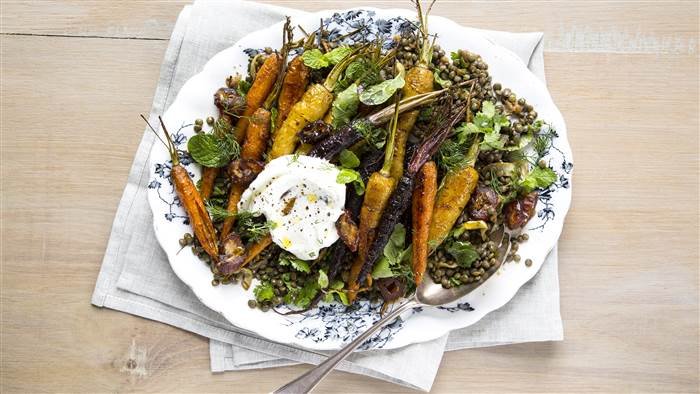
- Write it down.
Keeping a food diary or journal aids in weight loss because it keeps you aware and accountable for the food choices you make throughout the day. Even if this method does not incorporate calorie counting, overall better food choices will most likely still prevail. A study found individuals who used a food diary daily had double the weight loss compared to people who did not use one.
Losing weight is possible after 60. The key is continuing to make the effort and not giving up on the weight-loss battle!
Kristin Kirkpatrick, MS, R.D., is the manager of wellness nutrition services at the Cleveland Clinic Wellness Institute in Cleveland, Ohio, and the author of "Skinny Liver." Follow her on Twitter
Joanna Kerns on her cancer diagnosis: 'I did not want to live in fear'
Oct. 16, 2017 at 7:40 AMDonna Freydkin
TODAY
Director/actress Joanna Kerns underwent a double mastectomy after being diagnosed with a breast cancer inside the milk ducts, after what she thought would be a routine Contrast Enhanced Spectral Mammography screening. This is her story.
Ubiquitous. That’s how Dr. Ritu Chopra, my plastic surgeon, described breast cancer on the first follow-up appointment after my bi-lateral mastectomy this past December.
This is what I found when I looked it up.
Pervasive. Abundant. Permeating. That didn’t make me feel any better.
Eight years ago, I directed an episode of "Samantha Who?" The star, Christina Applegate, and I were sitting on set between lighting setups. It was late; we’d been working together for almost six days and I could see that she was tired. I was concerned about her because I knew she was only a few months out of a bi-lateral mastectomy, and we were about to shoot a scene where she had to jump up and down. I had asked the writers to drop this action but they were hesitant. I wanted to make sure she was ok. She told me not to worry; she’d figured out a way to do it.
I’d seen her interviewed on "The Oprah Winfrey Show," where she had shared her story as a cancer survivor. That is what I love about women; we share things. And sitting and talking with her that night on set about our breasts probably saved my life – if not my life - the quality of my 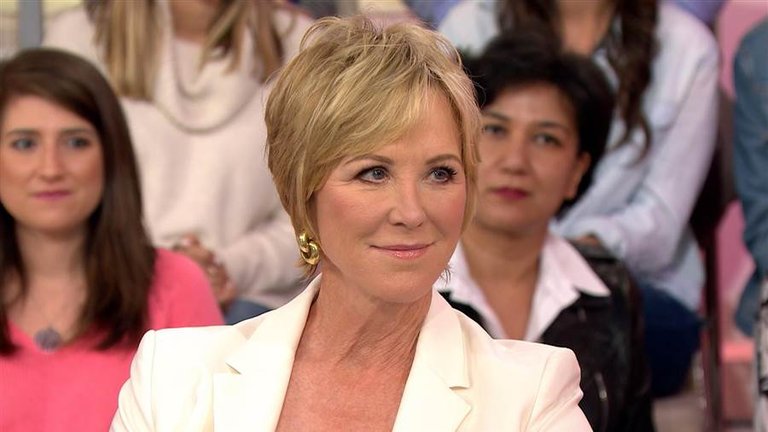
I told her I needed a new breast doctor. My radiologist, whom I loved, had just passed away. Christina suggested I should try to get in to see Dr. Kristi Funk of the Pink Lotus Breast Center. I was concerned, as I was a somewhat complicated case. Not complicated in the sense that breast cancer was in my family history, but complicated because, like many women, I am an implant survivor. I say implant 'survivor' because what doctors did not tell us in the '80s was that breast implants, especially those used during that time, had a high rate of failure ranging from leaking, to flipping, to getting hard.
They also did not tell you that cancer was harder to detect once an implant was in the way.
Body image is hard for every woman, but when you are an actress the pressure is extremely intense. In 1983, five years after my daughter was born, I caved into my insecurities, got a new pair of perfectly shaped breasts and landed my first series, "The Four Seasons." I remember screen testing in a silk cami and shorts with no bra necessary. It was so liberating.
I loved my new boobs… until I didn’t. Within two years, one of the implants flipped, leaving me with one very oddly-shaped breast. The doctor said, 'No worries, we’ll do it again.' If I remember correctly, he even gave me a discount. But when I woke up, my boobs were (huge). I was horrified. This wasn’t how I saw myself.
I was an athlete, a mom on a sitcom - not a bathing-suit model. I wanted my money back. The truth was, I wanted my own boobs back – the original set - stretch marks and all.
To make a long story short, that next set leaked and I learned after a routine mammogram that silicone had leaked into my lymph nodes. The implants had to come out. So finally, in 1991, after three surgeries, and the support of my husband, I had the implants removed altogether and got a lift.
advertisement
I was so happy to get back to being myself again. The only problem was that the resulting scar tissue made it impossible for me to do a self-exam. It was years later, on Nov.3, 2016, a Thursday, that I was driving between LA and Santa Barbara, fitting in my contrast mammogram at a facility in Thousand Oaks on my way home. On Christina’s recommendation, I’d been seeing Dr. Funk for over eight years. She had put me on a protocol of contrast mammograms due to the denseness of my breasts and the scar tissue from previous surgeries. This is different from what most women get and from what insurance (if you are fortunate enough to have it) will pay for. She would routinely follow this up with an ultrasound in her office.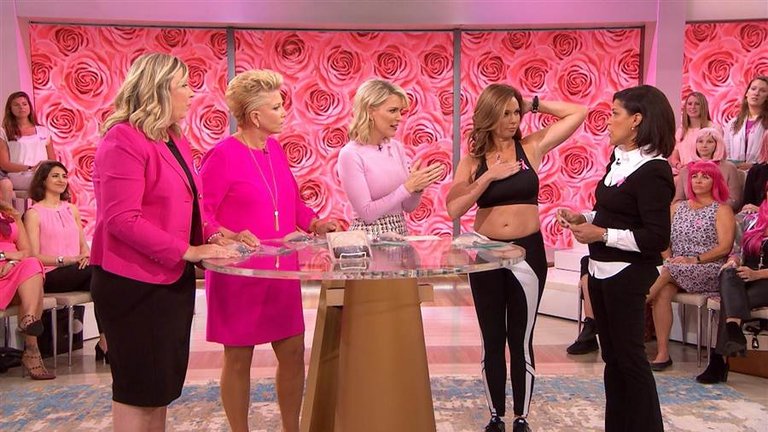
I was in a hurry, as always, because a new show I’d directed was airing that night and my friends were gathering for a viewing party. After my mammogram, I sat in the crowded waiting room for over two hours as other nervous women came and went. The anxiety in the room was palpable. I sat next to Jean, an elderly lady, (who) wept tears of relief when the nurse came out and gently told her she was free to go until next year. She’d shared her story with me. The chemo. The mastectomy. She was alone now with no husband.
As I watched Jean leave I knew something was very wrong. I was alone in the waiting room. The nurse said the radiologist would like to see me. When I entered his office the lights were dim and he was in front of a monitor, my 2013 contrast mammogram on the screen to the left of my most recent one. Even I could see the larger white pattern in my left breast.
What followed next is a blur. I had a biopsy the next day, a Friday. On Saturday, my husband and I were at a wedding, sitting outside on a beautiful mountaintop minutes before the bride walked down the aisle when the call came from Dr. Funk. The biopsy was positive. She was scheduling me for a lumpectomy that Wednesday. The music announcing the bride started to play.The night before my first surgery, my husband and I ate dinner at a restaurant directly across from our local Democratic headquarters.
I was diagnosed with noninvasive DCIS. My tumor was nearly 5 centimeters and I learned that my type of cancer, estrogen-negative, HER2 positive, does not respond to hormone suppressants like Tamoxifen. Therefore, the option of a lumpectomy followed by radiation did not seem like the right call for me. The rate of reoccurrence is apparently quite high in the original breast, and now I had an elevated risk in the other breast as well.
advertisement
I’d always taken my health for granted, because I’d always been healthy. I’m athletic and love to golf and swim. I eat right. I love my family, friends, and work. And I work 'til I drop - sometimes putting in 16- or 17-hour days. I drive copious miles between LA and Santa Barbara. I’m 64 and feel 40, so how could I get sick? When you are diagnosed with cancer your life as you know it tilts sideways. You learn more about cancer in 24 hours than all your years reading or hearing about it from a distance through friends.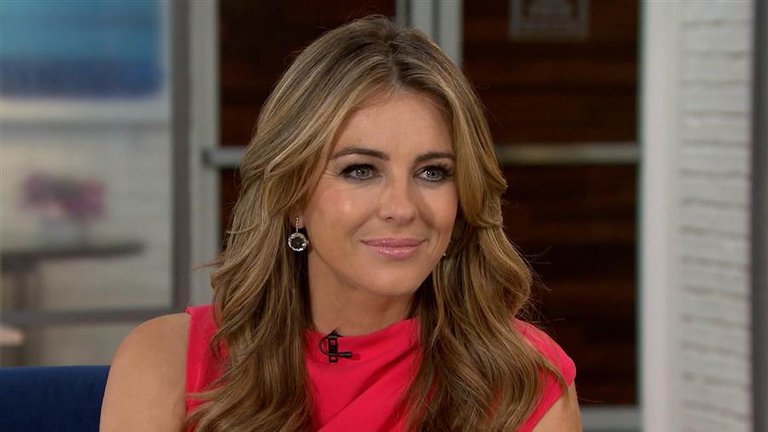 I soon learned that the median age of breast cancer is 61 years old, and that 85 percent of women with breast cancer don’t have a single relative with breast cancer. As Julia Louis-Dreyfus recently shared online when she revealed her diagnosis, one in eight women will get breast cancer in their lifetime. In retrospect, I’m not sure why I felt protected from something that is so…well…ubiquitous.I knew I could not live with the uncertainty of a reoccurrence, always wondering if the cancer would come back. I did not want to live in fear like Jean had.
I soon learned that the median age of breast cancer is 61 years old, and that 85 percent of women with breast cancer don’t have a single relative with breast cancer. As Julia Louis-Dreyfus recently shared online when she revealed her diagnosis, one in eight women will get breast cancer in their lifetime. In retrospect, I’m not sure why I felt protected from something that is so…well…ubiquitous.I knew I could not live with the uncertainty of a reoccurrence, always wondering if the cancer would come back. I did not want to live in fear like Jean had.
A mastectomy is not the right choice for every woman. Such an irreversible decision must consider all the unique things surrounding an individual: future cancer risk, cosmetic desires, family history, gene mutations, and tolerance for surveillance. It’s a deeply personal decision and I feel freedom in the choice I made. On Dec. 1, with the loving support of my husband, I had a bilateral mastectomy. On Dec 7th, my "Growing Pains" TV husband Alan Thicke, died suddenly. My dear friend of 31 years and the person I’d shared a life-changing career success with was gone. Barely a week out of my surgery, my heart was broken. I felt fragile, vulnerable and physically compromised.
At the time, full recovery seemed a long ways off. Healing was slow due to my previous surgeries, but today, I am fully recovered, cancer-free and back to work, with new breasts to boot!
Since being diagnosed, I have met so many women who have gone through similar experiences. Early detection and the right type of screening saves countless lives. I was lucky. I had immediate access to healthcare. I feel so fortunate, but healthcare should not be for the privileged few. Everyone should have access to these most basic of preventative procedures. I often think about Christina. If she hadn’t been so open about her breast cancer, I never would have seen her interview. It is because of Christina that I found Dr. Funk, who unlike doctors before her, insisted I have contrast mammograms due to the type of breast tissue I had. And it is because of this type of screening that I found my cancer early enough to quite possibly save my life. To Christina and all the women who have shared their stories, I say, 'Thank you.'
advertisement
In Case You Missed This
Your information better useful for weight loss thanks for sharing...
thanks
Nice you mam
thanks
Very informative! You hear so much and read so much that it can be confusing!!! Some say a vegetarian diet with fish only for protein & some say high protein-Low carb. I'm type 2 Diabetic, so I've really got to watch my carb intake. Very sensible approach!
thanks
Exceptionally instructive! You hear so much and read so much that it can befuddle!!! Some say a veggie lover consume less calories with angle just for protein and some say high protein-Low carb. I'm write 2 Diabetic, so I've truly got the opportunity to watch my carb consumption. Extremely sensible approach! TFS
thanks
Much obliged to you for your extraordinary tips Pauline. You are completely right, drinking water influences you to feel full and aides getting in shape. Can hardly wait to see your
thanks